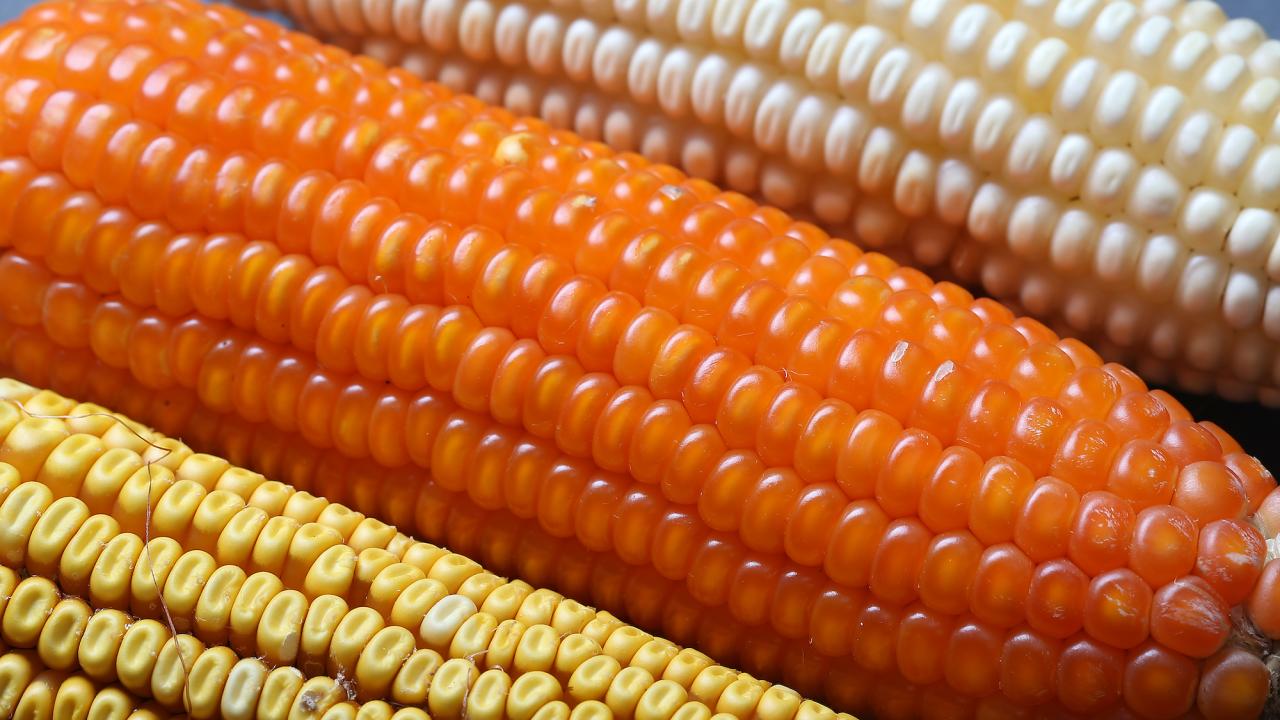
11 genes for carotenoid traits in kernels provide a roadmap for more nutritious maize
Christine Diepenbrock, an assistant professor in the Department of Plant Sciences, and several researchers from Cornell, Michigan State, Purdue, and North Carolina State Universities have collaborated to identify and thoroughly dissect 11 genes underpinning natural variation in levels of carotenoids, including those with provitamin A activity, in maize kernels.
“Certain carotenoids have provitamin A activity, meaning that they are converted to the active form of vitamin A once they have been cleaved after ingestion by humans or animals,” said Diepenbrock. “Vitamin A is an essential micronutrient with important roles in vision and immunity, among other key functions, in both humans and animals.”
While maize, or corn, is one of the most produced and consumed cereal grains worldwide, average provitamin A levels among diverse maize lines do not exceed 20 percent of the daily recommended intake. Vitamin A deficiency continues to be prevalent in communities where maize is a major component of human diets, including parts of Latin America, sub-Saharan Africa and Asia.

“The increased provision of provitamin A and other priority carotenoids through maize could be helpful in mitigating vitamin A deficiency and improving human nutritional status, alongside complementary solutions” said Diepenbrock, whose research group is focused on understanding and improving crop nutritional quality.
Lutein and zeaxanthin are two additional carotenoids that tend to be the most abundant carotenoids in maize grain. Lutein and zeaxanthin are prevalent in the macula – the functional center of the retina – and help protect it from damage. Higher dietary intake of these carotenoids is associated with the decreased risk of age-related macular degeneration, the leading cause of permanent vision loss in adults over 60.
The collaborative team employed high-density DNA sequence data, two types of genetic mapping, gene expression level measurements, and high-resolution data for carotenoid traits in their comprehensive investigation. The information they have thus produced, which provides an in-depth understanding of the genetic and molecular control of carotenoids in maize, can be integrated into breeding programs to expedite efforts to consistently reach target levels for provitamin A while also improving levels of other priority carotenoids in maize.
These findings will also equip breeders to target more regions of the maize genome, including genes in the precursor pathway that provide a substrate for the biosynthesis of carotenoids and other compounds, such as vitamin E.
“Overall, these findings can help to improve the gains made for carotenoid traits, improve predictive models that can be used by breeders as a decision support tool, and enable the fine-tuned optimization and balancing of multiple carotenoid traits in new maize varieties that are being developed,” said Diepenbrock.
Some of the identified genes may also be targets to be explored in other major cereal crops, like wheat or triticale, in which breeding for higher levels of provitamin A is of interest, suggested Diepenbrock.
This research was funded by the National Science Foundation, the USDA-ARS, Cornell University startup funds, and UC Davis startup funds.
To read the full research article, published in the Plant Cell, click here.
